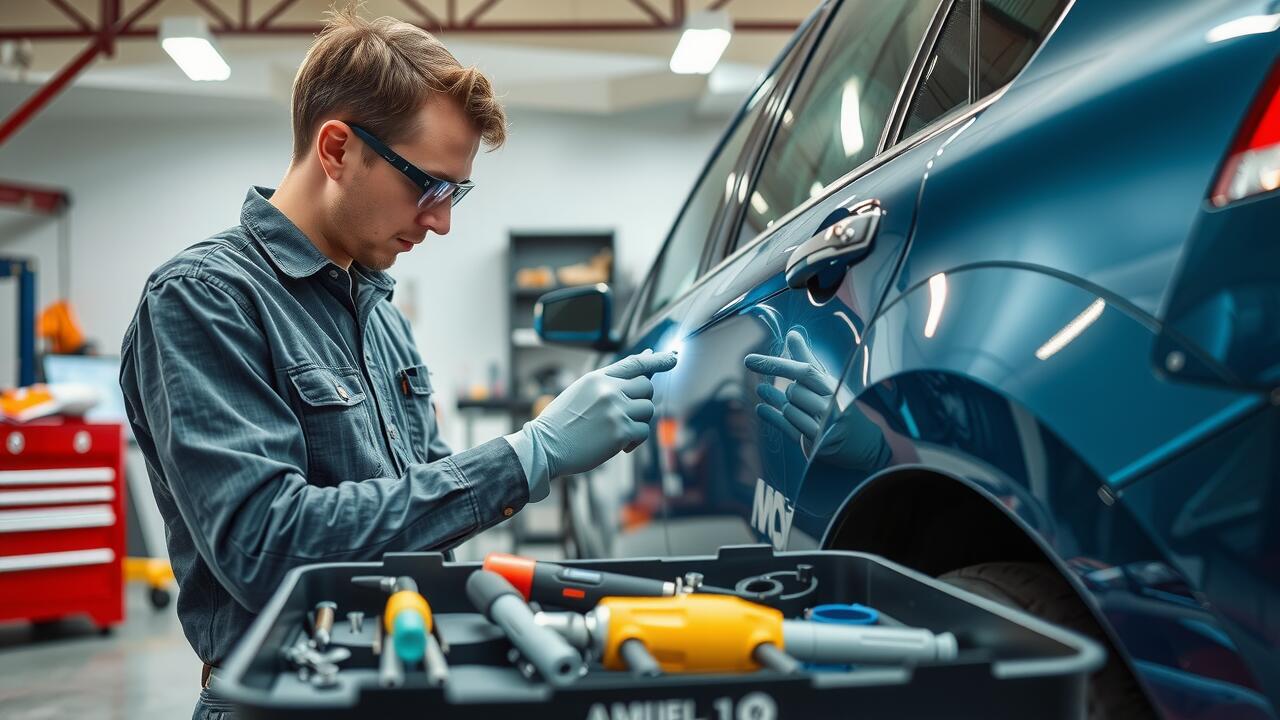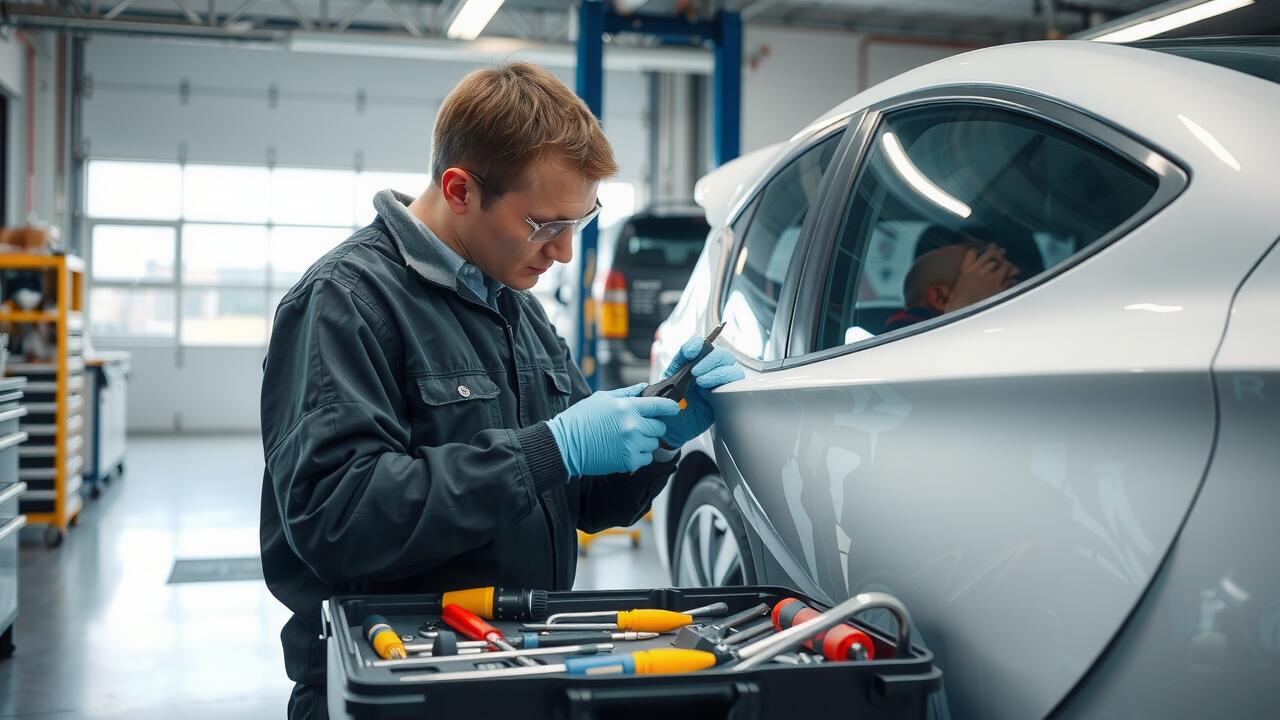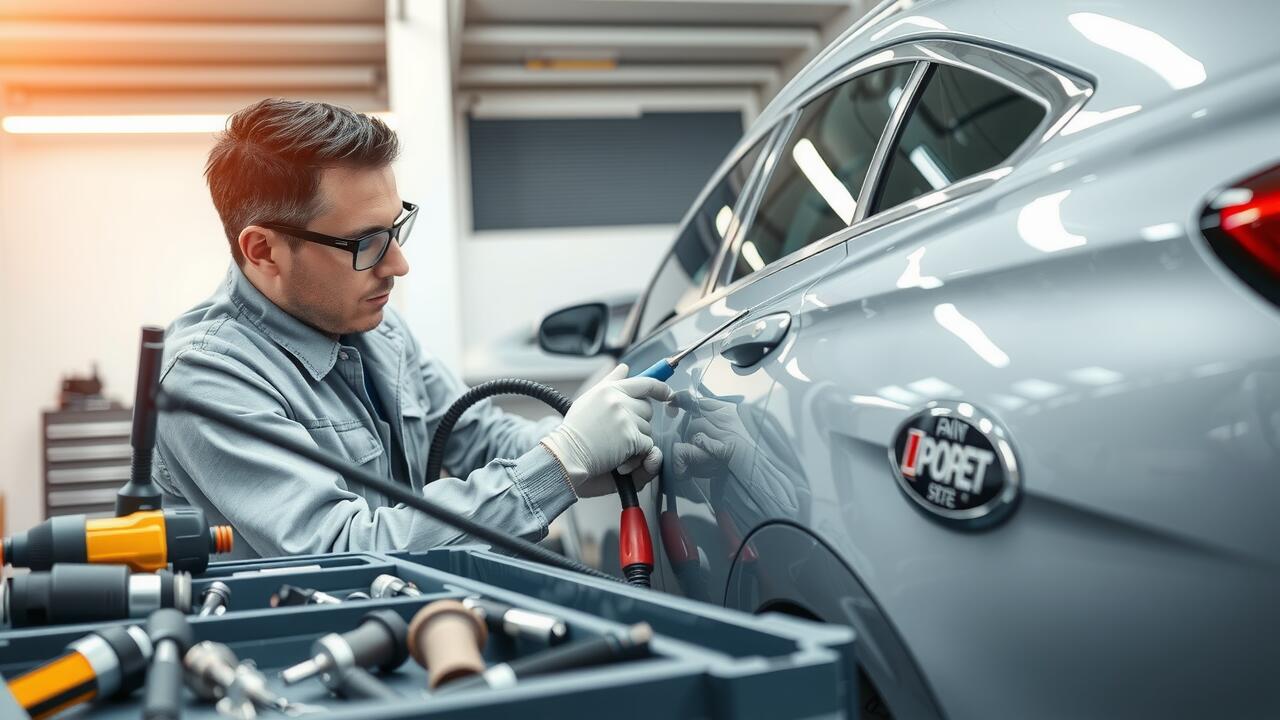
Preventative Measures After PDR
After undergoing Paintless Dent Repair, it is essential to take preventive measures to maintain the integrity of the vehicle's surface. Regularly washing and waxing your car can protect it from environmental factors that cause new dents and scratches. Using high-quality wax not only enhances the appearance but also provides a protective barrier against minor impacts. Parking in sheltered areas whenever possible will minimize exposure to hail or falling debris that can damage the vehicle.
Additionally, being mindful of where you place your vehicle can prevent future dents from occurring. Avoid crowded parking lots where door dings are more likely. Implementing a routine check for small imperfections can help you detect any new issues early, allowing for quicker intervention. By taking these preventative steps, you can significantly extend the life of the repair and keep your vehicle looking its best.
Maintaining Your Vehicle’s Surface
The surface of your vehicle plays a critical role in maintaining its appearance and value. Regular washing and waxing can prevent dirt and contaminants from affecting the paint job. When your car has undergone Paintless Dent Repair, ensuring the surface remains smooth and protected is even more important. During the first few weeks after a PDR treatment, avoiding excessive exposure to harsh chemicals is essential. These can potentially compromise the integrity of the repair and the paint.
Additionally, parking in shaded areas can help protect your vehicle from extreme weather conditions. UV rays from the sun can lead to fading and deterioration of the paint over time. Using a car cover can further safeguard against scratches and minor dents. By taking these preventative measures, you can help maintain the quality of your vehicle’s surface, especially after it has received Paintless Dent Repair. Regular attention and care can contribute to the longevity and aesthetic appeal of your car.
Comparing PDR with Traditional Repair Methods
Paintless Dent Repair (PDR) offers a modern approach to dent removal that can save time and money compared to traditional repair methods. With PDR, technicians manipulate the metal back into its original shape without the need for painting or replacement parts. This results in minimal disruption to the vehicle's finish and often a quicker turnaround time, making it an attractive option for many car owners looking to maintain their vehicle's appearance.
In contrast, traditional repair methods typically involve sanding, painting, and body filler, which can lead to more extensive labor and costs. While these methods might be necessary for more severe damage, they can also risk altering the car's original factory finish. Car owners often face a longer repair duration with the potential for mismatched paint, which can diminish the vehicle's resale value. Choosing between PDR and traditional repairs often hinges on the severity of the damage and the desired outcome for the vehicle's aesthetics.
Pros and Cons of Each Method
Paintless Dent Repair (PDR) offers several advantages over traditional repair methods. It is often quicker, with many repairs completed in a matter of hours rather than days. This method requires no paint matching or body filler, which can save both time and money. Additionally, PDR preserves the original finish of the vehicle, which can help maintain its resale value. The process is less invasive and generally results in a more environmentally friendly solution, as it eliminates the need for chemical compounds associated with paint repairs.
On the other hand, traditional repair methods come with their own set of benefits. They are often more versatile and can address a wider range of damage, including deep dents, scratches, or structural issues. Technicians can often ensure a seamless repair results, especially when it involves repainting areas. However, traditional methods can be more labor-intensive and may leave the vehicle's surface vulnerable during the repair process. This often leads to longer turnaround times, higher costs, and a potential decrease in the vehicle's original integrity compared to Paintless Dent Repair.
Customer Experiences with PDR
Many customers have reported positive experiences with Paintless Dent Repair (PDR). They appreciate the convenience of the service, often noting that the process is quicker than traditional repair methods. Most customers find that the results meet or exceed their expectations, restoring their vehicles to a nearly flawless state. The fact that PDR preserves the original paint finish is a major selling point, as it eliminates concerns about color matching or repainting.
Testimonials frequently highlight the cost-effectiveness of Paintless Dent Repair. Clients enjoy saving money without sacrificing quality. Several case studies illustrate instances where customers were pleasantly surprised by how quickly dents could be removed, alongside the minimal disruption to their daily routines. These firsthand accounts emphasize the growing popularity of PDR as a reliable option for maintaining vehicle aesthetics.
Testimonials and Case Studies
Many customers have shared their positive experiences with Paintless Dent Repair, highlighting its effectiveness in restoring their vehicle's appearance. One notable case involved a car owner who faced significant hail damage. After opting for PDR, the customer was astonished to see the dents disappear without any paint damage. The service not only saved them money compared to traditional methods but also reduced the overall downtime of their vehicle.
Another testimonial comes from a frequent commuter who sought Paintless Dent Repair for a minor door ding. The individual was impressed with how quickly the technician was able to remove the dent while preserving the original finish. This convenience and quality of work have driven many drivers to recommend PDR to friends and family. The combination of affordability, efficiency, and the integrity of the vehicle's surface makes PDR a valuable option for those dealing with dents.
FAQS
Can dents return after a paintless dent repair (PDR)?
While PDR is designed to restore the vehicle's surface to its original condition, there is a possibility that dents can return due to factors like improper handling, severe weather conditions, or ongoing stress to the metal.
What can I do to prevent dents from coming back after PDR?
To prevent dents from reappearing, it's essential to avoid parking in high-traffic areas, use car covers, and avoid extreme temperatures. Regular maintenance and careful driving can also help protect your vehicle.
How does PDR compare to traditional repair methods in terms of durability?
PDR is often more durable than traditional repair methods because it preserves the original paint and metal integrity. However, if the underlying cause of the dent, such as stress or fatigue in the metal, isn't addressed, there’s a chance the dent can recur.
Are there any long-term effects of PDR on my vehicle's surface?
Generally, PDR should not have negative long-term effects on your vehicle's surface. However, if the repair is not done properly, it could lead to issues such as paint chipping or further structural weaknesses.
How can I tell if a PDR job was done correctly?
A properly executed PDR job will leave the surface smooth and free of any visible defects. If you notice any irregularities, such as ripples, paint damage, or if the dent reappears, it’s advisable to consult with your technician for further assessment.

